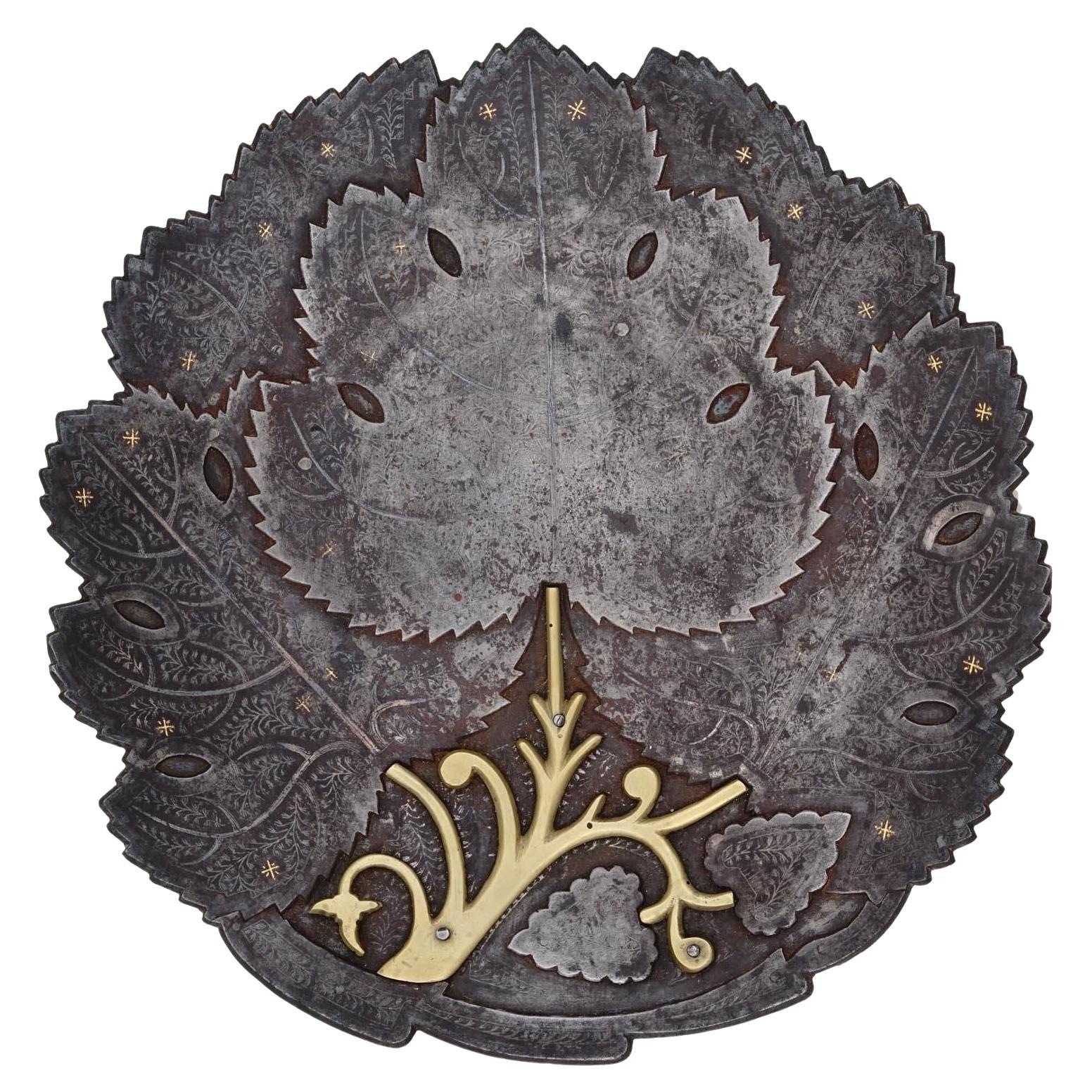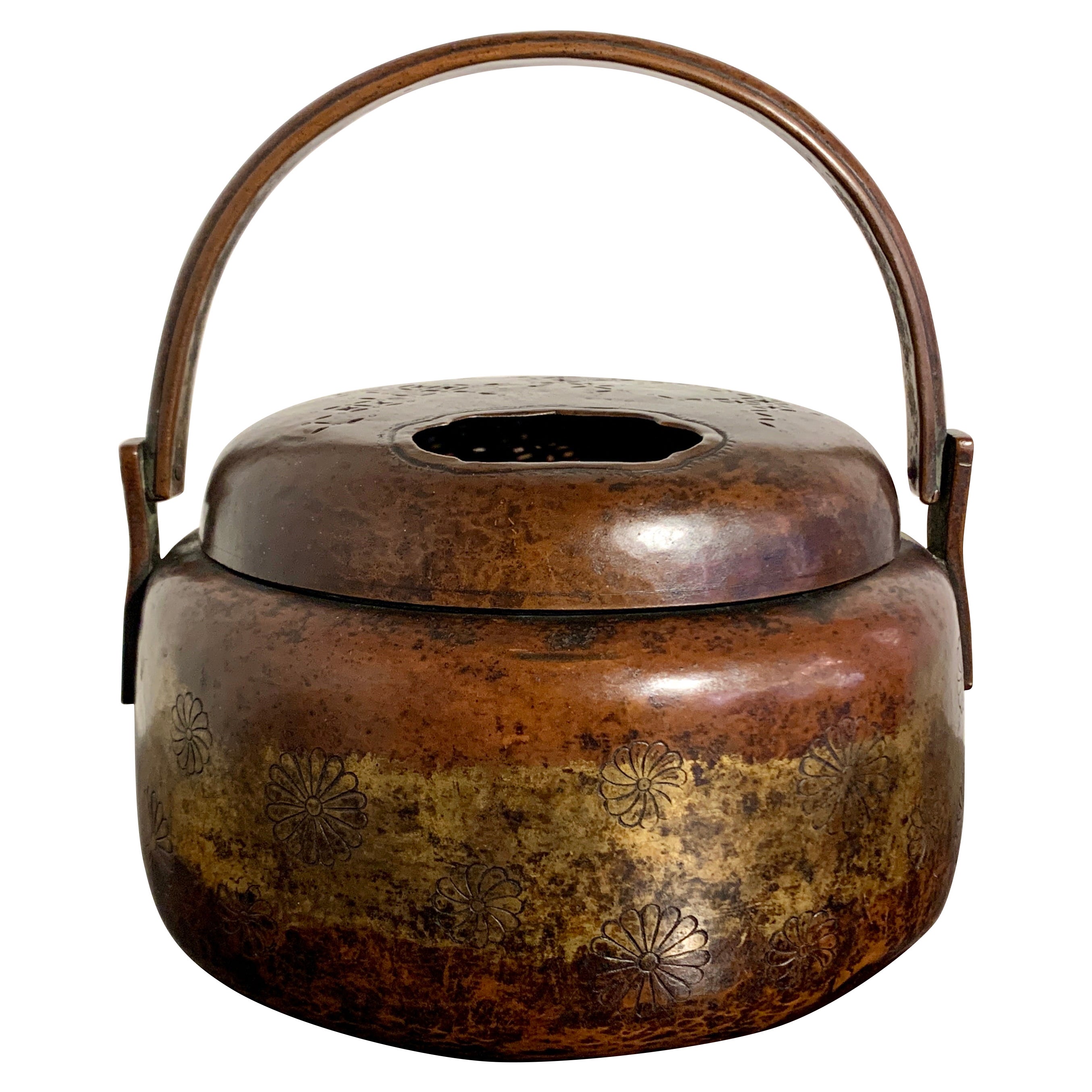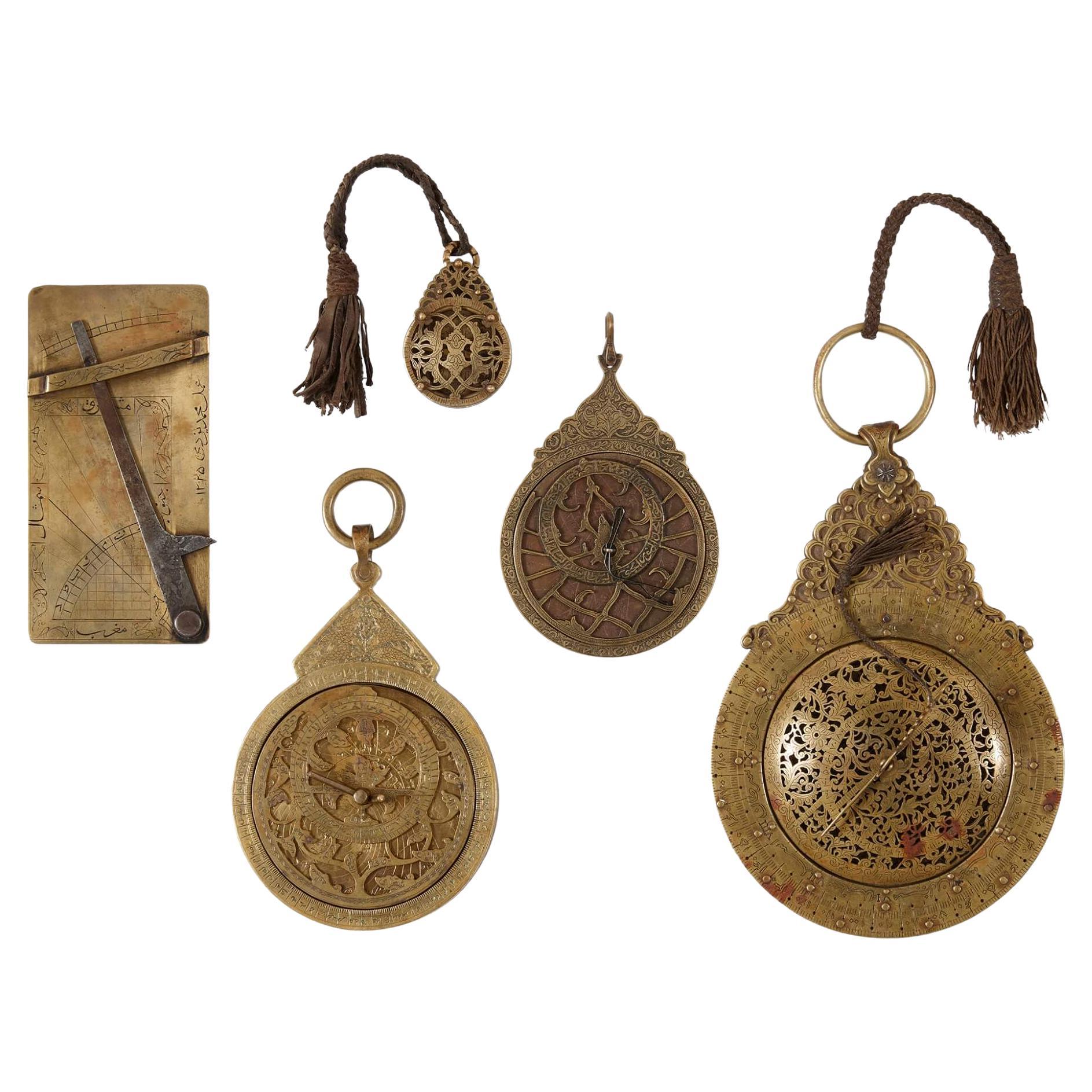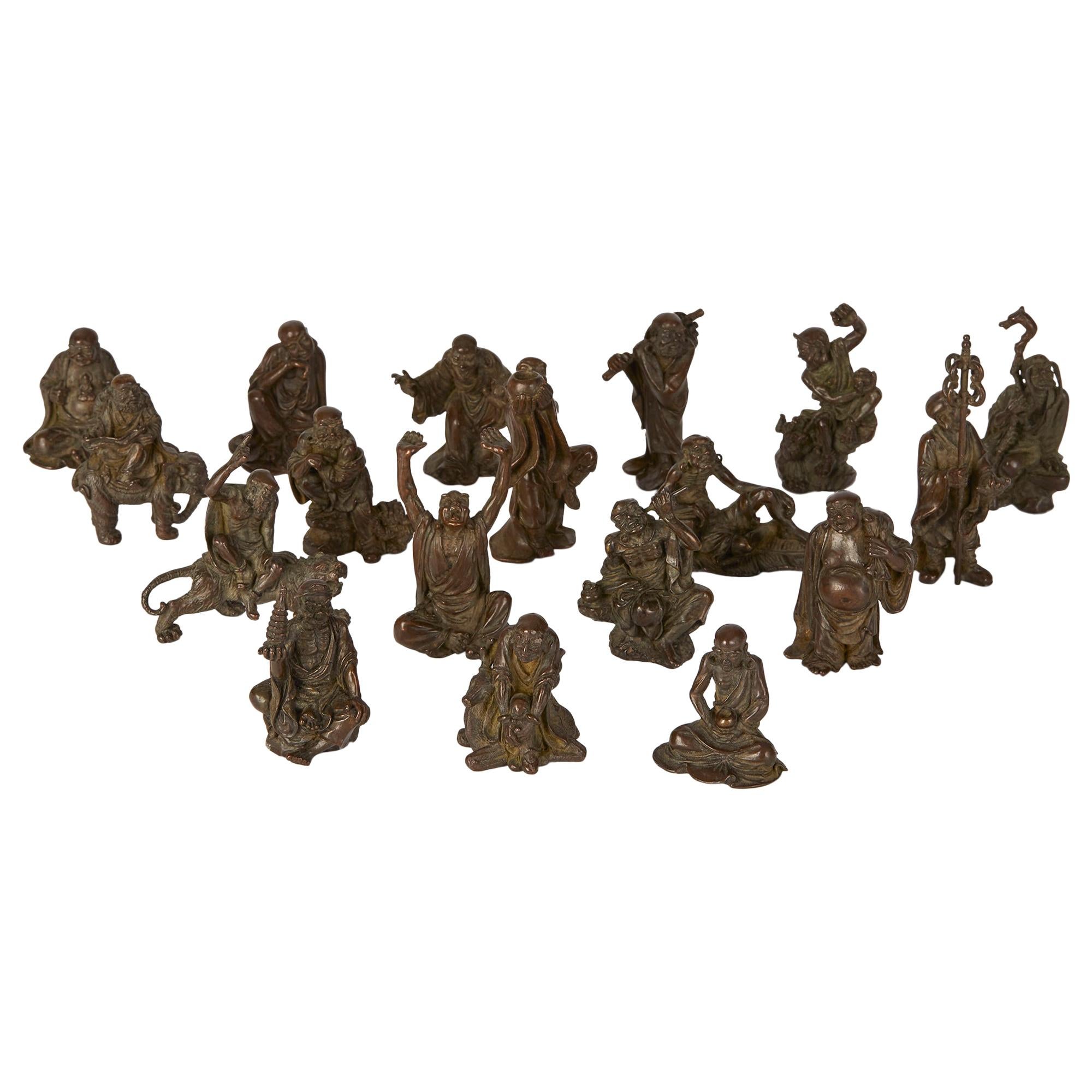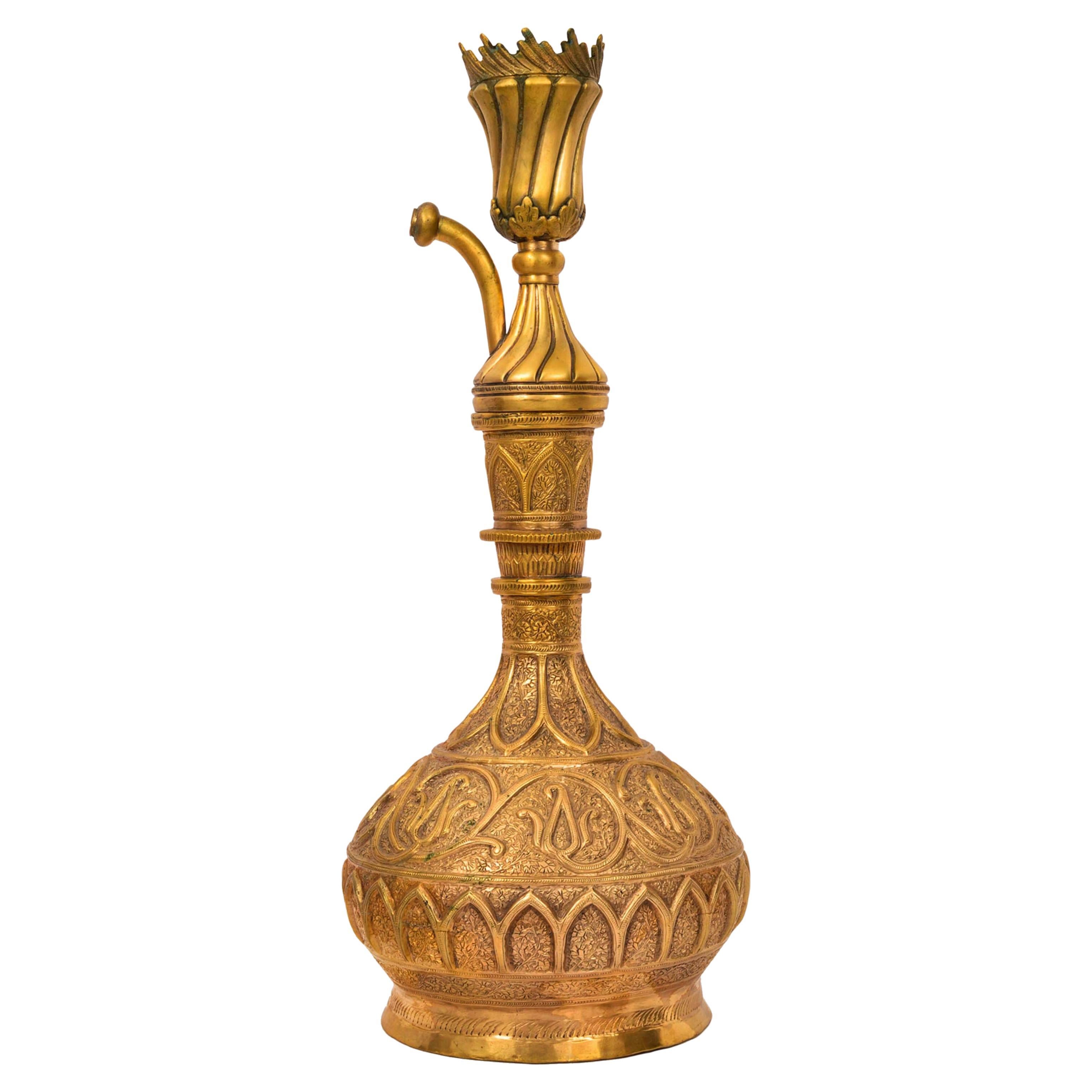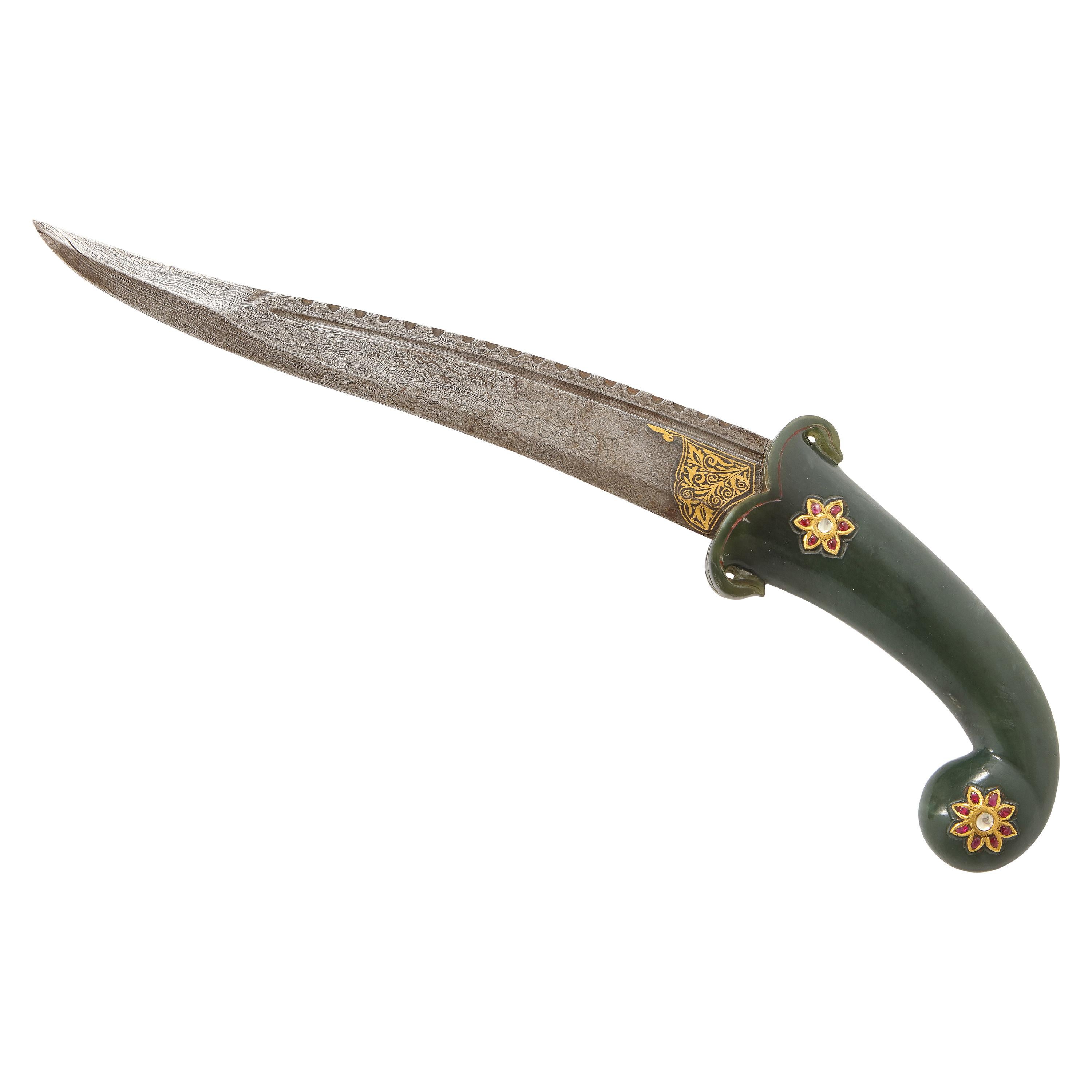Items Similar to 18th/19th Century Nepalese Inlaid and Gilt Silver and Copper Altar
Want more images or videos?
Request additional images or videos from the seller
1 of 10
18th/19th Century Nepalese Inlaid and Gilt Silver and Copper Altar
About the Item
Our beautiful antique Hindu altar from Nepal, circa 18th/19th century, is crafted from silver and gilt copper and repousse designs and inlaid with hundreds of stones. It has three drawers and a backplate depicting the god, Vishnu on his mount, Garuda. Part eagle and human, Garuda is Vishnu's vehicle, or vahana, and represents the god's power and speed as he carries out his cosmic duties.
- Dimensions:Height: 16.5 in (41.91 cm)Width: 17.75 in (45.09 cm)Depth: 5 in (12.7 cm)
- Materials and Techniques:
- Place of Origin:
- Period:
- Date of Manufacture:c1800
- Condition:Wear consistent with age and use. Minor losses.
- Seller Location:New York, US
- Reference Number:1stDibs: LU6079239031682
About the Seller
No Reviews Yet
Vetted Seller
These experienced sellers undergo a comprehensive evaluation by our team of in-house experts.
Established in 1990
1stDibs seller since 2021
Typical response time: 1 to 2 days
- ShippingRetrieving quote...Ships From: New York, US
- Return PolicyA return for this item may be initiated within 2 days of delivery.
More From This SellerView All
- Pair 18th Century French Gilt Bronze and Marble Figural CandelabraLocated in New York, USOur monumental pair of 18th century candelabra of French origin depict Roman neoclassical male and female holding cornucopia, finely carved from white marble, with four light ormolu bronze candleholders of foliate design with fruits, nuts and grape bunches. Provenance: Arne Schlesch & José Juárez...Category
Antique Early 18th Century French Neoclassical Candelabras
MaterialsMarble, Bronze
- 19th Century French Empire Style Ormolu and Patinated Bronze Figural CandelabraLocated in New York, USOur pair of antique (19th century) French ormolu and patinated bronze three-light candelabra are of the highest quality, with neoclassical female figures holding candle arms in the...Category
Antique 19th Century French Empire Revival Candelabras
MaterialsBronze
- Pair 19th Century French Giltwood Rope-Twist ArmchairsLocated in New York, USOur pair of finely crafted armchairs dating from the late 19th century have a twisted-rope form after the original model by A.M.E. Fournier, and are covered in chintz with red rose f...Category
Antique Late 19th Century French Armchairs
MaterialsWood
- 18th Century Franz Xavier Karl Palko (1724-1767) Oil Paintings Depicting ChristLocated in New York, USOur extraordinary paintings, attributed to Franz Xavier Karl Palko (1724-1767) depict Christ in the house of Simon the Pharisee, and Christ and the children of Zebedee. Stretchers 1...Category
Antique 18th Century German Paintings
MaterialsCanvas
- 19th Century French Ormolu Bronze Mantel Clock Depicting Madonna with CrossLocated in New York, USOur large French gilt and patinated bronze mantel clock dating from the second quarter of the nineteenth century features the finest casting and gilded details. It depicts Mary sea...Category
Antique Early 19th Century French Neoclassical Mantel Clocks
MaterialsBronze
- Boucheron Parcel Gilt Silver Vase and Oil Lamp circa 1880By Fréderic BoucheronLocated in New York, USOur important parcel-gilt and patinated silver and glass-mounted vase and matching oil lamp were designed by Paul Legrand (1840-1910) and crafted by the silversmith, Charles Glachant, for Boucheron of Paris, circa 1878-1880. 21 in tall and 16.5 in wide (53.4 by 41.9 cm). 28.56 lbs, 457 oz, 14,210 g. Provenance: presented to or purchased by Jean-Baptiste Pezon (1827-1897); acquired by a European private collector, perhaps on the death of Jean-Baptiste Pezon in 1897, by descent; acquired by YM Antiques, 2017. This double walled vase has an amphora form, with body and foot with silver, gilt and patinated and stylized flowers, anthemions and sprays of cherries against an etched and matted ground pierced to reveal a gilt inner wall. The upper body is detachable via a slip-lock, and mounted on both sides with arched panels formed of hexagonal beveled glass tiles. One glass panel applied with bacchic infants taunting a rearing goat and the other side with infants feeding grapes to a lioness under a looming bust of a satyr. The patinated and gilt upswung loop bifurcated handles are mounted with fully modeled figures of Pan bearing a syrinx and thyrsus and a draped maenad playing two flutes, both above roaring lion heads, the rim inset with a slip-lock detachable gilt bowl etched with masks of various representations of Bacchus spaced by ribbons and trophies and with scrolling fruiting vines. The base of interior with detachable base metal drip pan to accommodate the removable oil lamp designed to illuminate the glass tiles from within. The lamp is raised on four hoof feet, the upturned ends cast underneath with masks and with detachable cover mounted with two infant satyrs and flanked by gilt loop handles. The bacchic themed design featuring cartouches depicting infants taunting a goat and lion, plus prominent lion masks at the handles, certainly appealed to Boucheron's customer, Jean-Baptiste Pezon (1827-1897), who is believed to have commissioned the piece. Pezon was the celebrated lion tamer and headliner of the Grande Menagerie whose profession brought him great fame and fortune in Paris. Born a shepherd boy in Lozere, he is said to have left his home at the age of seventeen in the company of a wolf he had captured and trained years earlier. He headed to Paris and by the age of twenty-one purchased his first lion who he named Brutus. The animal is said to have inspired the Lion of Belfort, the monumental red standstone sculpture by Frederic Bartholdi erected in Belfort in 1880. Toulouse-Lautrec was among his admirers and friends, visiting Pezon's Great Lozerian Menagerie to sketch animals. A large bronze sculpture of Pezon atop a female lion adorns the Pezon family tomb in the Pere Lachaise Cemetery in Paris, as seen in our image here. The vase and detachable bowl are marked on the underside with the silversmith's mark of Charles Glachant. The underside and upper rim of the lower body is engraved "Fic Boucheron Paris". The lamp is marked on underside and flange of cover for Glachant. Boucheron archives indicate the vase was inspired by the amphora vases created by the Greek potter, Nikosthenes, 550-510 BC. The Nikosthenic amphora vases are a form of Attic vase recognized for their angular amphora form with broad flat handles. Potted of bright orange-red clay, they were decorated with plant and animal motifs within distinct friezes, with the most significant defining feature being the black figure painting, often highlighted with white accents. In this vase Legrand re-imagines the striking contrast of the black figures against a warm ground through the use of patina and gilding. His inventive use of piercing and double-wall construction create additional levels of texture and depth throughout the body. The same combination of ornamentation was employed in a ewer designed by Legrand in 1880 in the Islamic taste. (See lot 77 of Christie's sale in New York on October 22, 2009.) Edmé Bouchardon (1698-1762), royal sculptor to Louis XV, may have provided Legrand with inspiration for the vase's iconography. The panel featuring bacchic infants taunting a rearing goat is very similar to a bas relief representation of Winter designed by Bouchardon for the Fontaine des Quarte-Saisons on rue de Grenelle, Paris. Bouchardon debuted his plaster model for the bas relief in 1741, and the fountain was completed in 1745. The Boucheron firm, founded by the celebrated jeweler, Frédéric Boucheron...Category
Antique 1880s French Greek Revival Vases
MaterialsSilver
You May Also Like
- 19th Century Indo-Persian Silver Inlaid and Parcel Gilt Steel and Brass DishLocated in New York, NYFine antique (19th century) Indo-Persian steel dish or salver in the form of overlapping grape leaves with damascene and koftgari silver inlay and gilded designs and brass overlay re...Category
Antique Late 19th Century Indian Metalwork
MaterialsCut Steel
- Japanese Parcel Gilt Copper Hibachi, Edo Period, 18th Century, JapanLocated in Austin, TXA sublime Japanese parcel gilt copper hand warmer, hibachi, with chrysanthemum design, Edo Period, 18th century, Japan. The hand warmer, called a...Category
Antique 18th Century Japanese Edo Metalwork
MaterialsCopper
- Collection of 18th and 19th Century Arabic Astrolabes and QuadrantLocated in London, GBA collection of 18th and 19th century Arabic astrolabes and quadrant Persian, 18th/19th Century Largest: height 23cm, width 13cm, depth 3cm Smallest: height 6.5cm, width 4.5cm, depth 1.5cm This excellent set of antique astronomical instruments is a selection of five Persian brass astrolabes...Category
Antique Early 19th Century Persian Islamic Scientific Instruments
MaterialsBrass
- Bronze Collection Eighteen Luohan Disciples, 18th-19th CenturyLocated in Bishop's Stortford, HertfordshireAn extremely rare bronze collection of the eighteen (Archats) Luohan Disciples as adorned in Chinese Buddhist culture. The figures are exceptionally well made and represent the Luoha...Category
Antique Late 18th Century Chinese Metalwork
MaterialsBronze
- Antique 19th Century Ottoman Islamic Tombak Gilt Copper Nargile Hookah TurkeyLocated in Portland, ORA fine & rare antique 19th Century Ottoman Tombak (Gilt Copper) Nargile or Hookah pipe, Turkey, circa 1850. A nagile or hookah pipe's history dates back...Category
Antique 1860s Turkish Islamic Tobacco Accessories
MaterialsCopper
- 18th/19th Century Mughal Dynasty Gold and Gem Encrusted Jade DaggerLocated in New York, NYMughal dynasty gold and gem encrusted Spinach jade dagger having a dark green pistol grip, inlaid with gold, ruby and sapphire applied rosettes to either s...Category
Antique 19th Century Indian Islamic Metalwork
MaterialsJade, Steel
Recently Viewed
View AllMore Ways To Browse
12 Foot Console
Tapestry 16th
Finland Blue Vase
French Marble Iron Console
Round Beveled Framed Mirrors
Green And White Majolica
Cut Crystal With Lid
18th Century Neoclassical Panels
Fabric Shell Chair Swivel
Washi Paper Table Lamp
Bureau And Bookcase
Clear Bookcases
Small Ball Pendant
Traditional Carved Wood Coffee Table
Turkish Ottoman Gold
1948 Bedroom Set
Line Drawing Carpets
10 In Murano Vase
